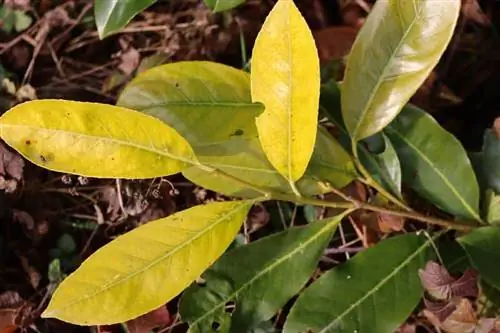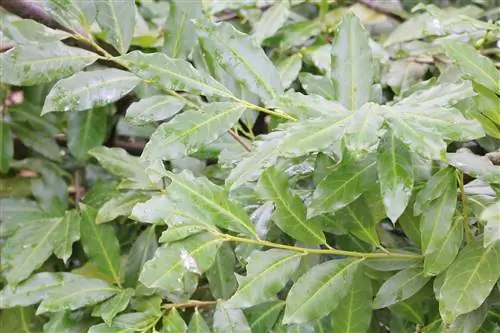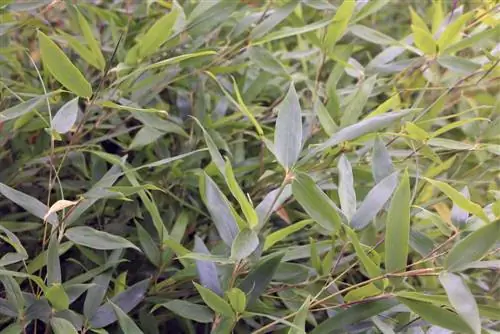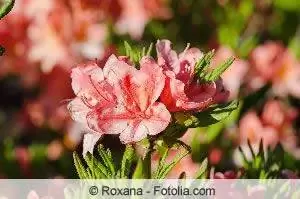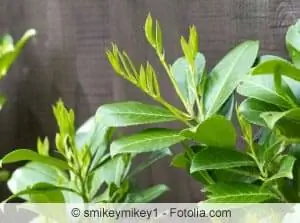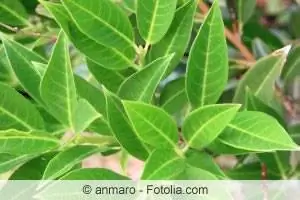- Author admin [email protected].
- Public 2023-12-17 03:39.
- Last modified 2025-01-24 12:45.
Cherry laurel is one of the robust garden plants in the garden. Nevertheless, it can happen that the leaves of the cherry laurel turn yellow or brown. The causes are manifold. Since some can kill the laurel cherry, you should get to the bottom of the matter.
Floor
Although the cherry laurel (Prunus laurocerasus) does not have high demands on the soil, the subsoil can be the cause of yellow leaves. The leaf discoloration usually occurs in garden soils that
- are poorly ventilated or
- moist.
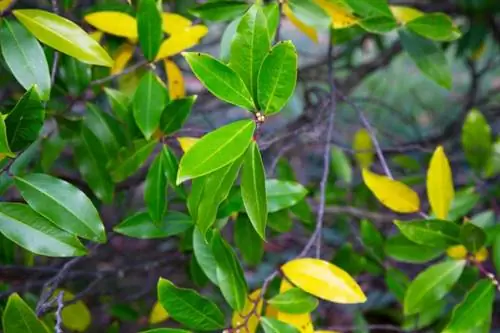
Since the taproot of the laurel cherry grows a good two meters deep, the soil should not be compacted even in deeper layers.
Note:
With compacted soils, there is often the problem of waterlogging because the rainwater cannot drain away. A typical sign of root rot is yellow leaves.
The solution to the problem is complex:
- Dig up cherry laurel
- Work coarse building sand into the soil
- Reinsert cherry laurel
Note:
If compacted soil is the cause of yellow leaves, this becomes apparent in the first few years of the laurel cherry's life. This makes the tedious digging process a little easier because the plant doesn't grow as quickly.
Iron and nitrogen deficiency
Iron and nitrogen deficiencies cause the foliage of the cherry laurel to turn yellow. It is easy to distinguish whether nitrogen or iron is missing:
- Iron deficiency: yellow leaves with green veins
- Nitrogen deficiency: Yellowing of the entire leaf including leaf veins
Give the cherry laurel a portion of mineral fertilizer as an immediate aid. As a preventive measure, provide the plant with three liters of compost per square meter in spring.

Tip:
If iron deficiency occurs repeatedly despite fertilization, you should test the pH value of the soil. If it is very high, then this may be the cause of the deficiency.
Frost dryness
If the leaves or entire branches of the cherry laurel turn yellow in winter, this is the so-called frost drying.
Leaves that have dried up due to frost can no longer be saved. That's why you should make sure that the laurel cherry does not suffer from drought, even in winter:
- if the ground is not frozen, water every now and then
- Cover the leaves with a fleece to protect them from the drying winter sun
- cut off frozen branches in spring
- Fertilize laurel cherries with godpotash in autumn (increases resistance to frost damage)
Potassium deficiency
If older leaves have brown, dead leaf edges and tips, Prunus laurocerasus is suffering from a potassium deficiency. If nothing is done about it, the symptoms will also appear on younger leaves.
Tip:
Potassium deficiency is particularly common in sandy soils with low pH values. There is also an increased risk in heavy clay soils, as potassium is stored there.

In acute cases, you can help the cherry laurel with a potassium fertilizer. Since the plant absorbs the fertilizer quickly, you should notice an improvement as soon as possible. In the long term, you can prevent a potassium deficiency by regularly fertilizing the laurel cherry with a tree, shrub or hedge fertilizer with a high potassium content.
Shotgun disease
Shotgun disease is particularly common and severe after a rainy spring. You can recognize the fungal disease by the following symptoms:
- Leaf parts with yellow marbling
- round holes in some places
If you notice an infection, you should act quickly:
- Cut off affected plant parts (disinfect secateurs after each cut)
- Collect clippings and dispose of them in organic waste
- Treat cherry laurel with clay or copper preparations
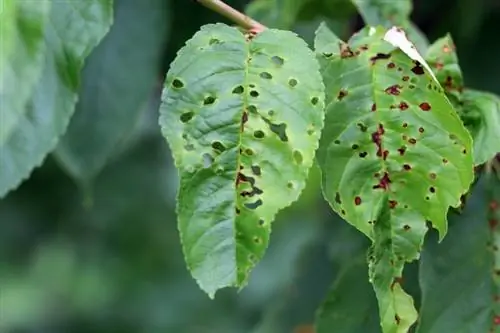
Horsetail manure or net sulfur is used as a preventative measure to strengthen the laurel cherry. A thick layer of mulch also prevents infection.
Sunburn
If the soil is very dry, the sun will burn the leaves of the cherry laurel. The damage occurs on those parts of the leaf that are particularly exposed to sunlight. The entire leaf does not necessarily have to turn yellow or brown.
When it comes to sunburn, there is no real solution because the burnt leaves can no longer be saved. Therefore, you should make sure that the laurel cherry does not suffer from drought.
Water shortage
If the cherry laurel's water supply is poor, the leaves will turn yellow after dry summers. However, since this occurs with a time delay, it is difficult to identify the cause, as the leaves often only turn yellow when the lack of water has long since passed.
To solve this problem, mulch the cherry laurel with leaves or other organic material.
Frequently asked questions
How tolerated is the cherry laurel when cut?
The cherry laurel tolerates cutting very well. To remove yellow or brown leaves or twigs, you can cut into he althy wood. After cutting, you should water the plant thoroughly. Choose an overcast and frost-free day for pruning.
How do onions and garlic help against shotgun disease?
A decoction of onions or garlic helps prevent fungal infections. Water the cherry laurel regularly. Alternatively, you can also place onion and garlic as neighbors to the bay cherry.

